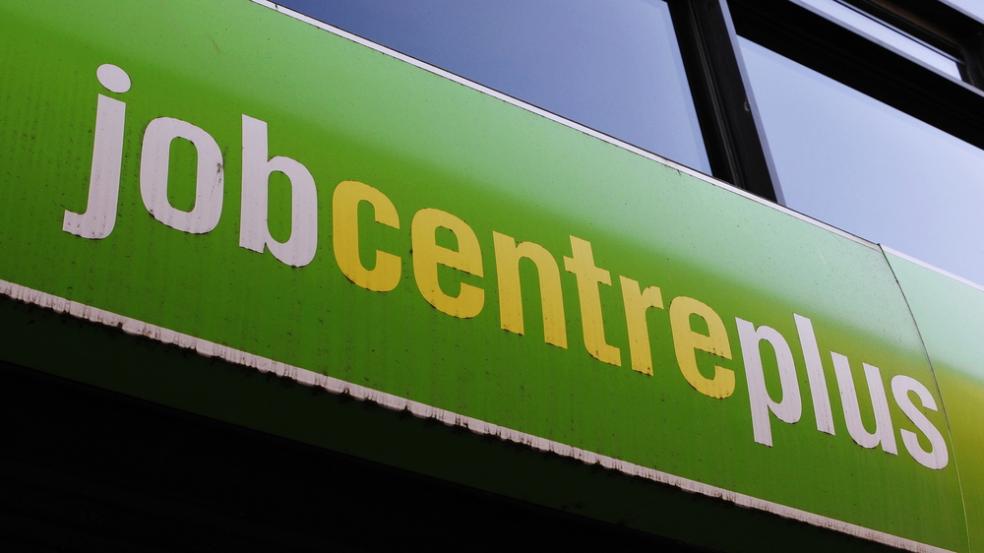
Rise in unemployment in the South West despite national fall
Unemployment in the South West rose by 0.5% to 6.3% in the June to August quarter, according to figures released by the Office for National Statistics (ONS).
The rise does not mirror the national trend which saw unemployment in the UK fall slightly overall by 0.1%, with only the South West, North West and West Midlands seeing increases in jobless numbers. However, the South West continues to hold the third lowest regional rate of unemployment in the UK, behind only the East of England and the South East.
The employment rate in the South West stood at 74.4% in the three months to August, down 0.2% on the previous quarter. Nationally the rate went up by 0.3% to 71.7%. The South West has the third highest rate of employment in the UK, behind the South East and East of England.
Government: "A million more people in work"
The Government has welcomed UK figures, highlighting a million more people are in work compared to early 2010 according to the ONS figures.
The Department for Work and Pensions say that the total number of people in employment is now at a new record high, claiming the rise is being driven by growth in full-time and permanent jobs.
The Government says today’s figures also show that there are more than 540,000 vacancies available in the UK economy at any one time.
This, it says, is accompanied by a "welcome" fall in unemployment of more than 18,000 over the last 3 months – a figure that includes a significant fall in long-term unemployment of more than 15,000.
Minister for Employment Esther McVey said:
"Today’s figures show a rise in employment of more than a million under this government – and they show that there are now more people in work than ever before.
"That’s a really positive sign of growth in the UK economy, and a credit to British businesses for creating those jobs.
"We are not complacent – there’s still work to do – but with more than 500,000 vacancies currently available, and with all the signs being that the economy is turning a corner, we can see that there are opportunities out there for hardworking people who aspire to get on in life."
But Rachel Reeves MP, Labour’s Shadow Work and Pensions Secretary, said:
“The small fall in unemployment is welcome, but there are still far too many people chasing too few jobs. And for those in work the cost of living crisis continues, with prices now rising faster than wages for 39 out of the 40 months since David Cameron became Prime Minister. Working people are now on average more than £1,500 a year worse off under this out-of-touch Government.
“The number of people in part time jobs who want to work full time is at a record high at almost 1.5 million. Almost one in five part time workers want to do more but can’t get the extra hours. There are still almost one million young people out of work, with unemployment amongst 18-24 year olds up by 10,000. The number of people unemployed for more than two years is up 23,000 on the year.
“Unacceptable levels of youth unemployment, long term unemployment, and rising underemployment continue to do deep and lasting damage to people’s lives and our country’s economic prospects. We need a recovery that benefits everyone, not just a few at the top. That is why Labour will repeat the tax on bank bonuses and limit pension tax relief for the highest earners to pay for a compulsory jobs guarantee for young people out of work for a year and adults unemployed for two years – a paid job people would have to take up or lose benefits.”
The Government further highlights that today’s figures show that the total number of people out of work has fallen by more than 450,000 since early 2010, with the number of people claiming out-of-work benefits down by a similar amount.
The number of people claiming Jobseeker’s Allowance (JSA) has fallen by 41,700 over the last month, and is down by 214,500 since this time last year. The number signing on is now at the lowest level since January 2009.
Meanwhile, the number of young people claiming JSA fell 13,500 over the past month, and by 84,800 over the past year. It is now down to the lowest level since November 2008.
From today, anyone making a new claim for JSA will have to sign a Claimant Commitment. The commitment will see jobseekers having to account more clearly for their efforts to find work in order to receive their benefits. It will roll out in around 100 jobcentres a month until it’s fully implemented across the county in the spring.
Key UK figures
- The employment rate for those aged from 16 to 64 was 71.7%, up 0.3 percentage points from March to May 2013 and up 0.4 from a year earlier. There were 29.87 million people in employment aged 16 and over, up 155,000 from March to May 2013 and up 279,000 from a year earlier.
- The unemployment rate was 7.7% of the economically active population, down 0.1 percentage points from March to May 2013 and down 0.2 percentage points from a year earlier. There were 2.49 million unemployed people aged 16 and over, down 18,000 from March to May 2013 and down 40,000 from a year earlier.
- The inactivity rate for those aged from 16 to 64 was 22.2%, down 0.2 percentage points from March to May 2013 and down 0.3 percentage points from a year earlier. There were 8.95 million economically inactive people aged from 16 to 64, down 83,000 from March to May 2013 and down 88,000 from a year earlier.
- Total pay rose by 0.7% compared with June to August 2012. Regular pay rose by 0.8% over the same period.
- The number of people claiming Jobseeker's Allowance last month fell by 41,700 to 1.35 million
- The employment rate in Great Britain was highest in the South East (76.3%) and lowest in the North East (66.5%).
- The unemployment rate in Great Britain was in the North East (10.3%) and lowest in the East of England (5.9%).
- The inactivity rate in Great Britain was highest in the North East (25.7%) and lowest in the South East (18.8%).
- The Claimant Count rate in Great Britain was highest in the North East (6.5%) and lowest in the South East (2.4%).











